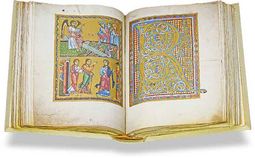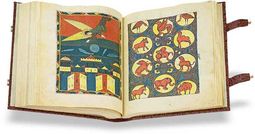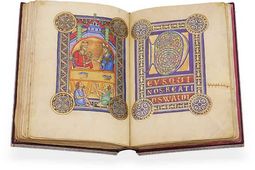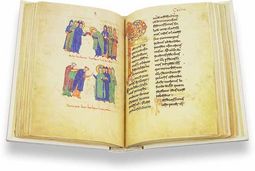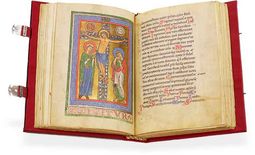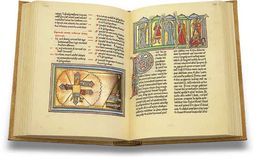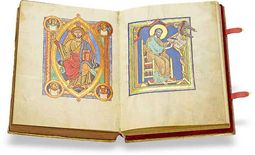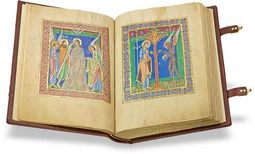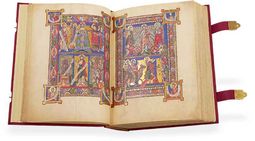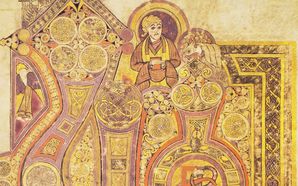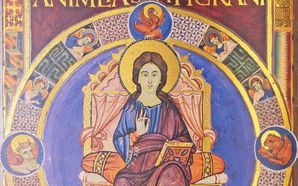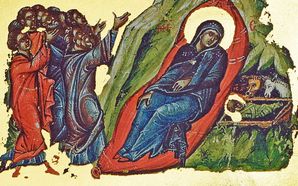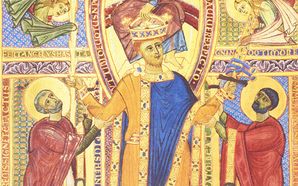Romanesque Illumination
Romanesque art was the first international European artistic movement and is named for the fusion of Roman, Carolingian and Ottonian, Byzantine, and local Germanic traditions in the West, while eastern art continued to develop within the strict aesthetic of the Byzantine style.
Mostly originating from the 11th and 12th centuries, many works that can be considered to be Romanesque also fall outside of this timeframe. Although the Romanesque period was the first in which western European art generally shared similar traits, distinct aesthetics existed across Europe. These regional styles came to influence one another, resulting in the gradual emergence of a truly international style that would develop in the Gothic period.
Romanesque illumination was vigorous, innovative, and yet coherent, seamlessly blending classical, Byzantine, and Insular artistic influences while making use of striking primary colors.
Demonstration of a Sample Page
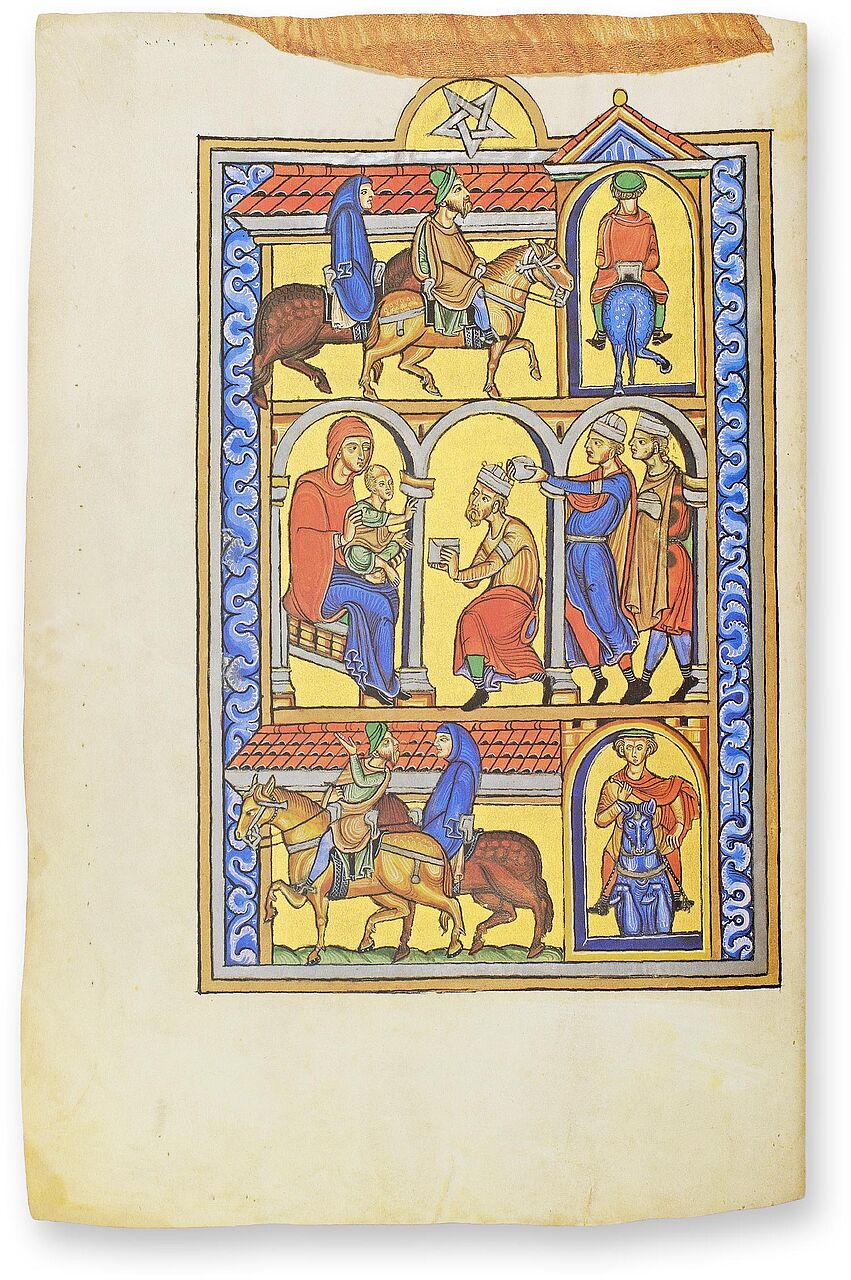
Berthold Sacramentary
Triumphal Entry into Jerusalem
Here we have a superb example of Romanesque illumination depicting Christ as he arrives at Jerusalem, celebrated today as Palm Sunday. The scene makes use of rich primary colors favored in Romanesque art, which are enriched by the generous use of gold leaf, including the Byzantine-style burnished gold background.
Set within a beautifully patterned frame, the scene is distinguished by its vigor and dynamism in comparison to the more static Ottonian style, especially with respect to the posturing and gesturing of the figures. From Christ’s entourage approaching the city, to the men stripping off their tunics to lay in front the Messiah’s donkey, to those looking out windows and climbing trees to get a better look, the entire scene is defined by movement.

